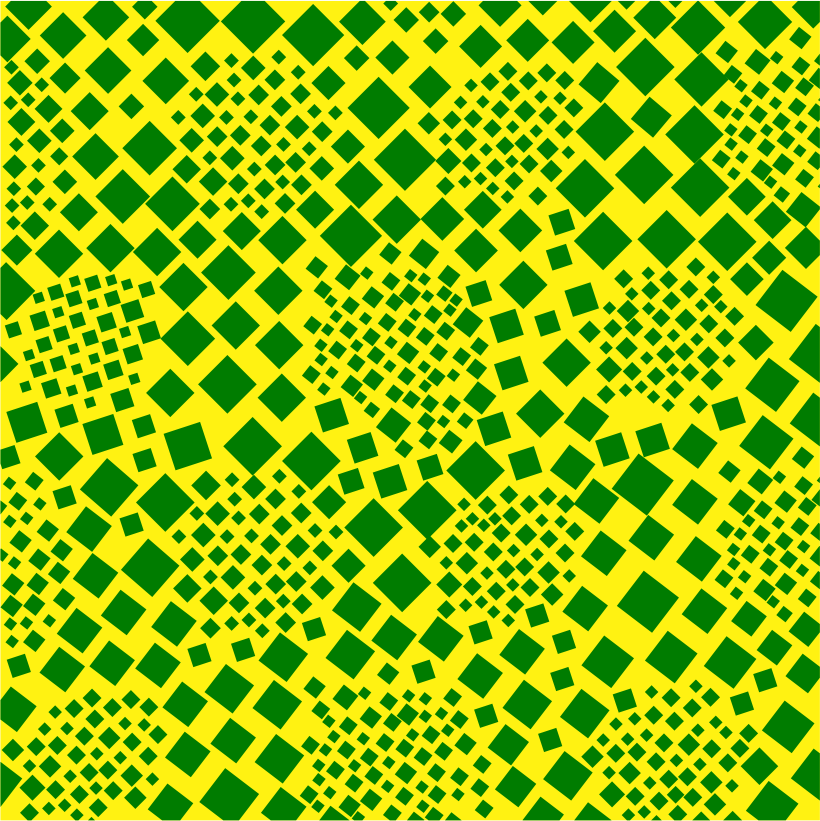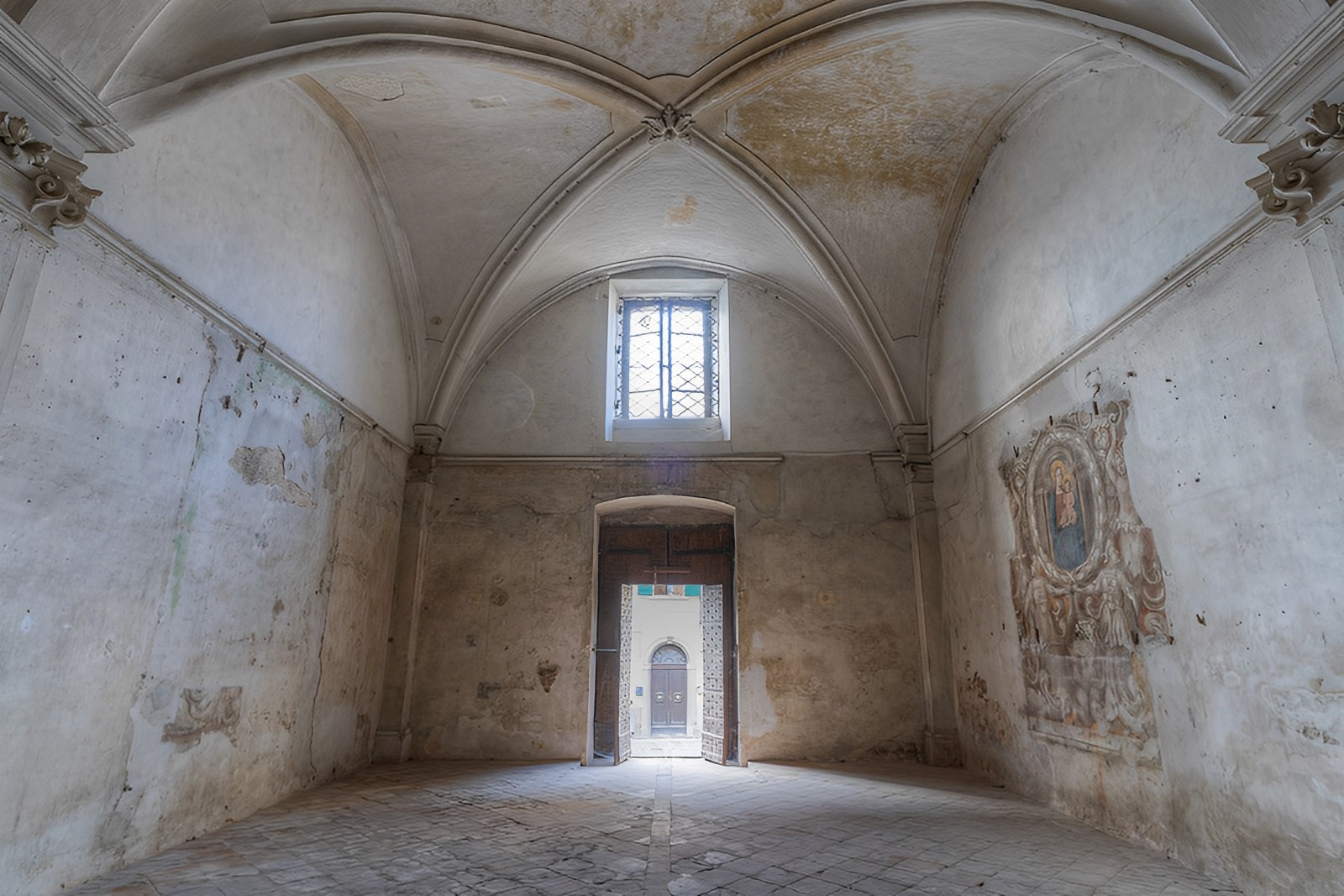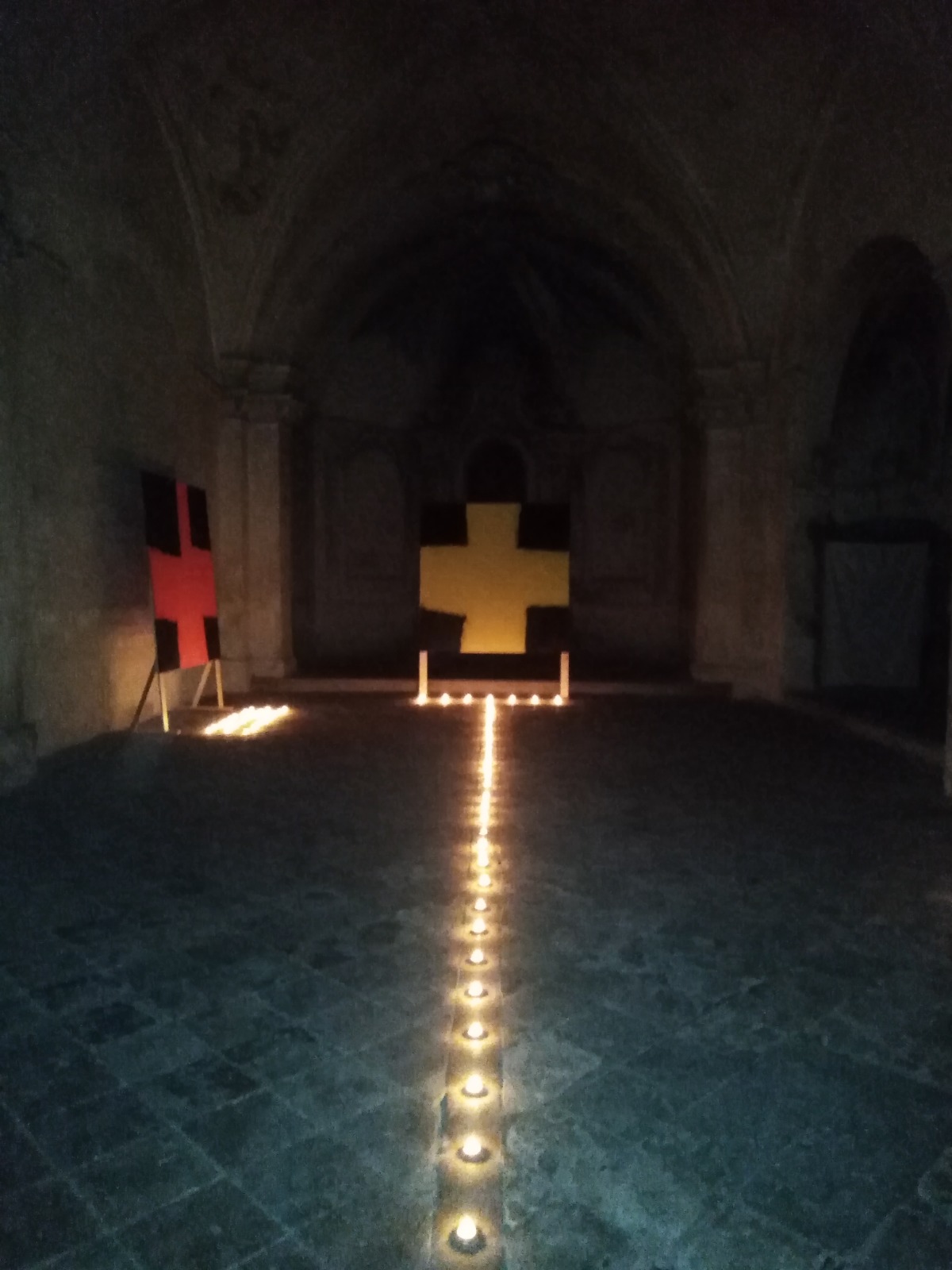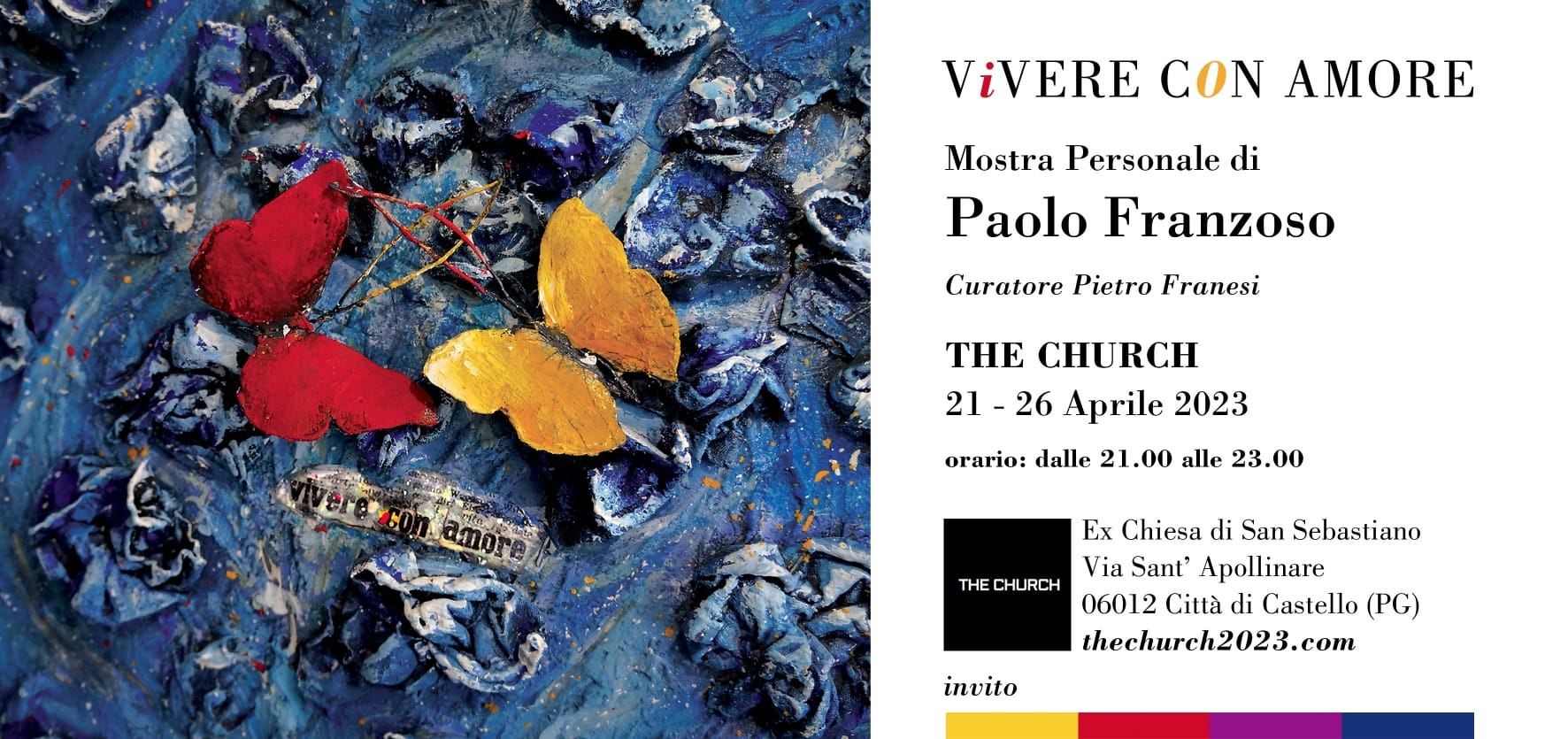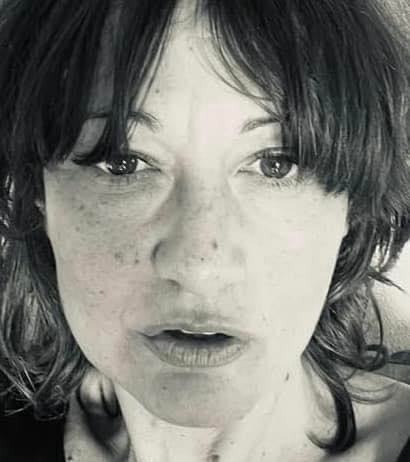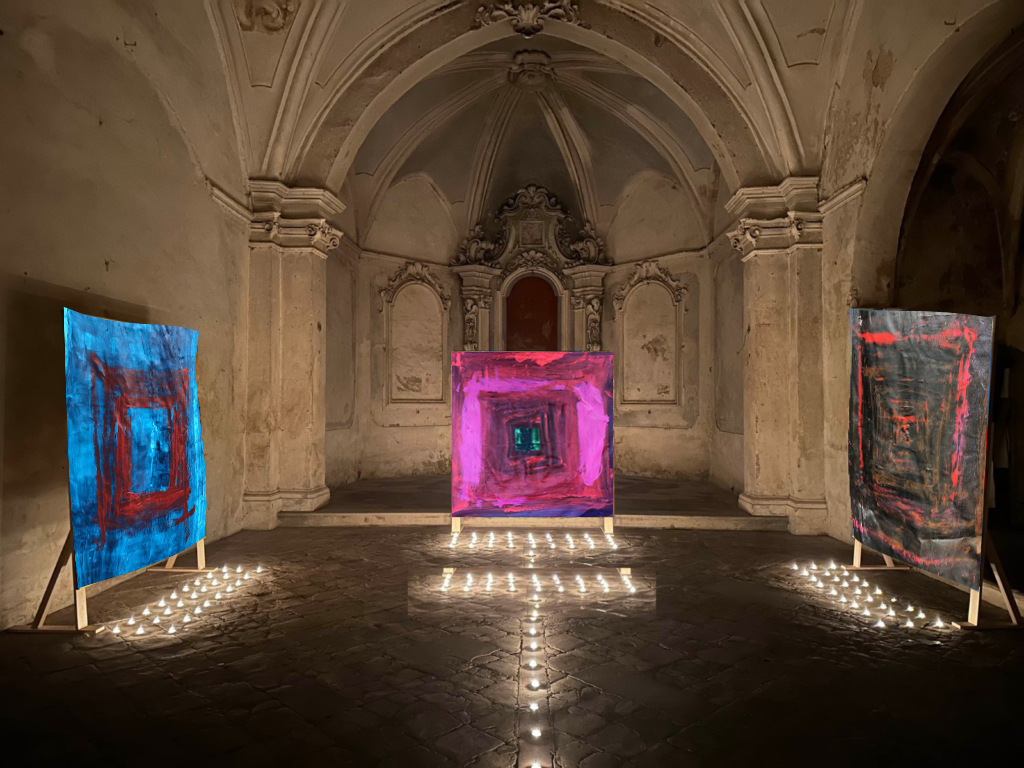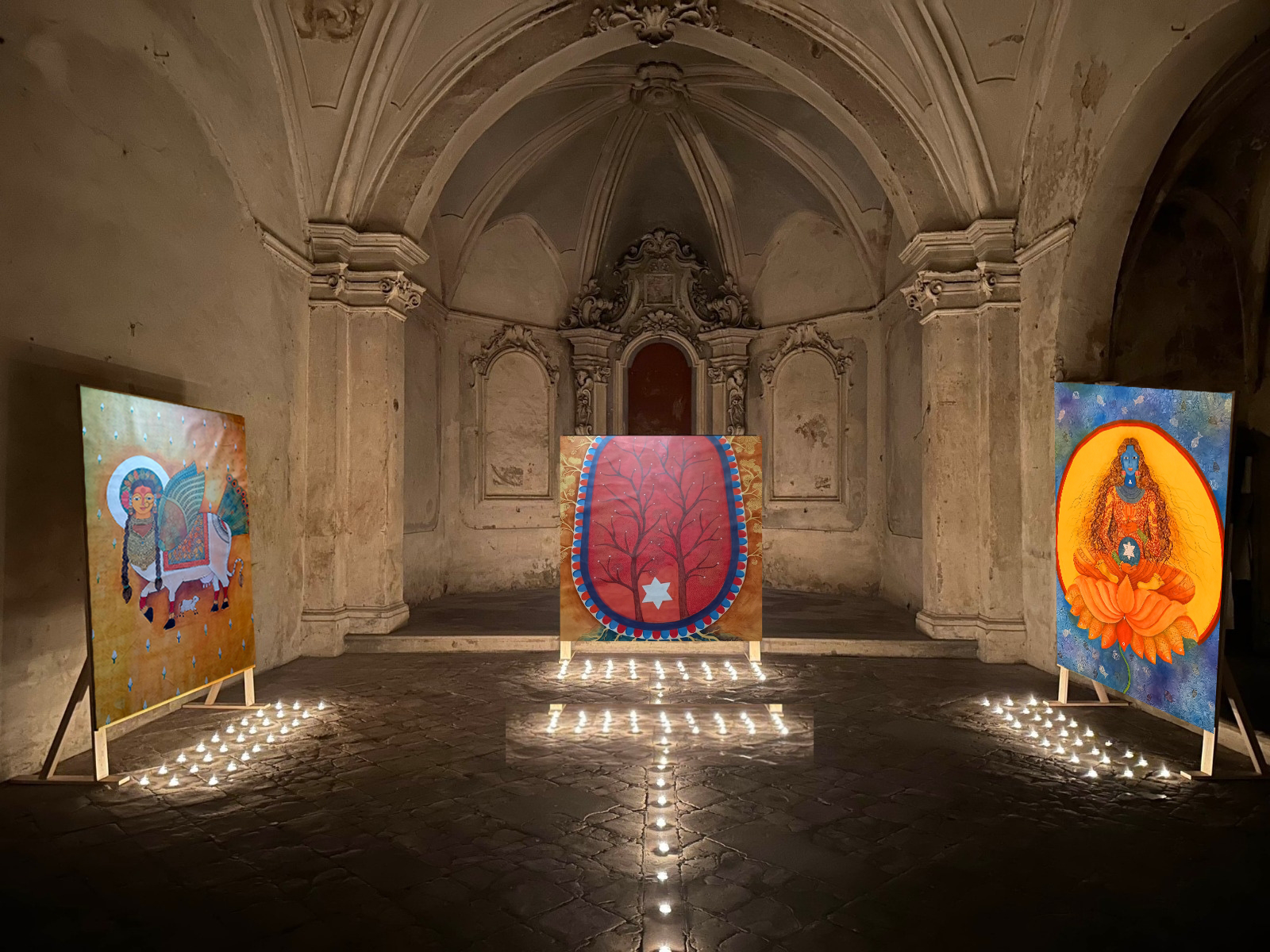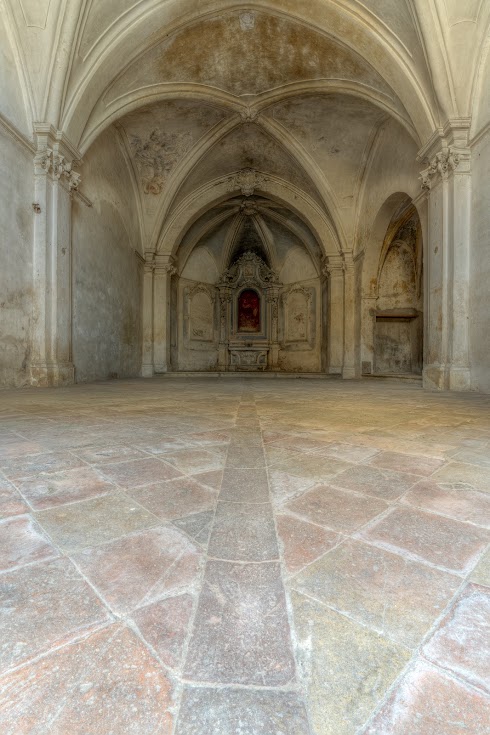
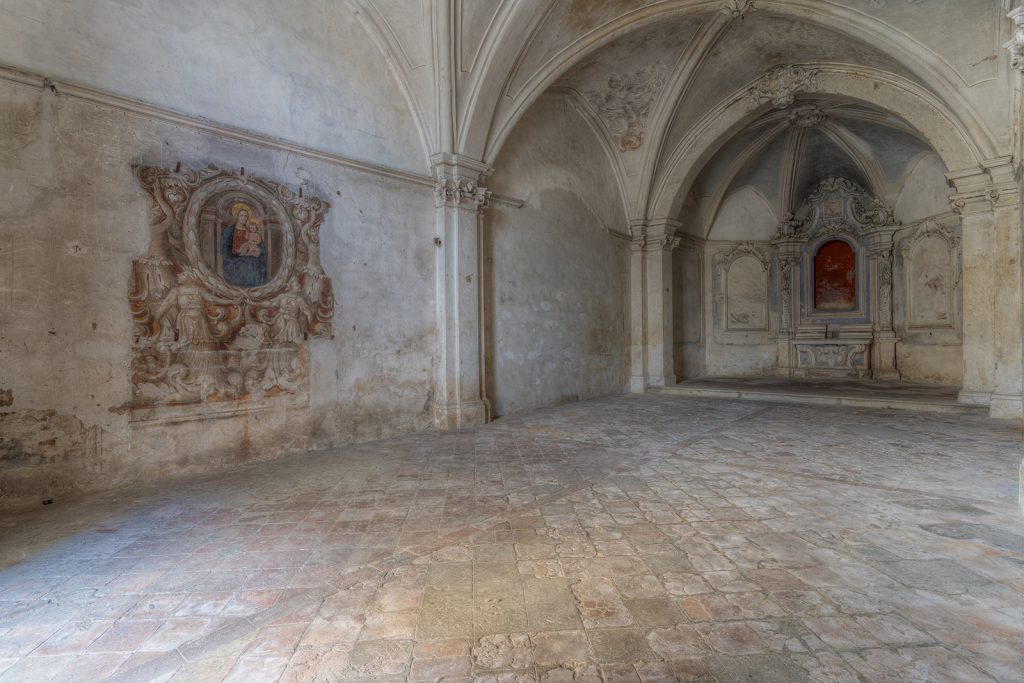
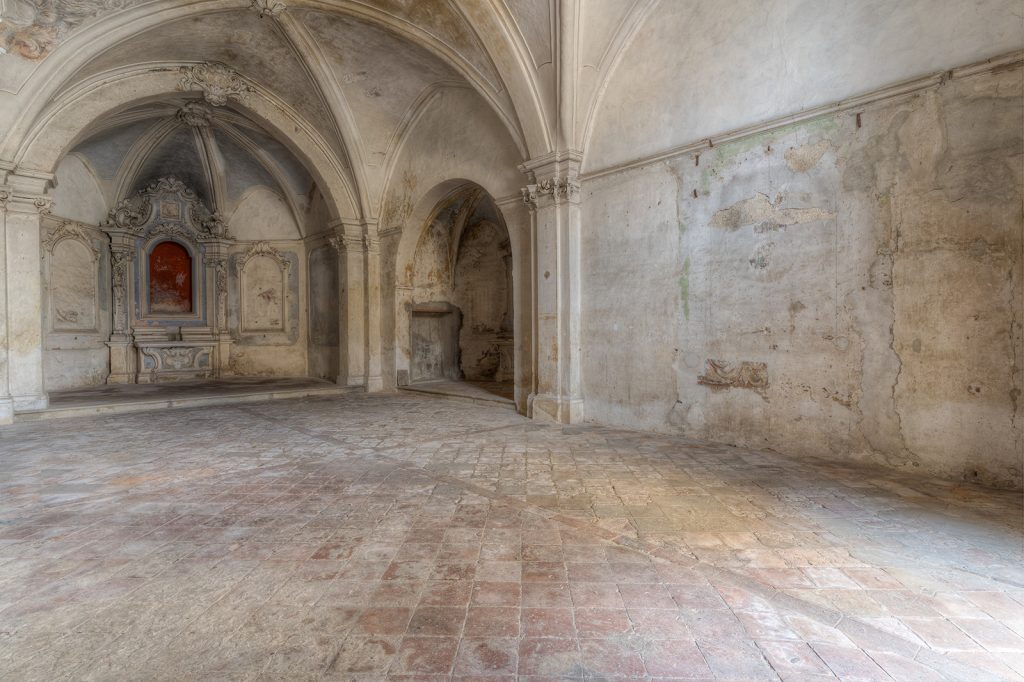
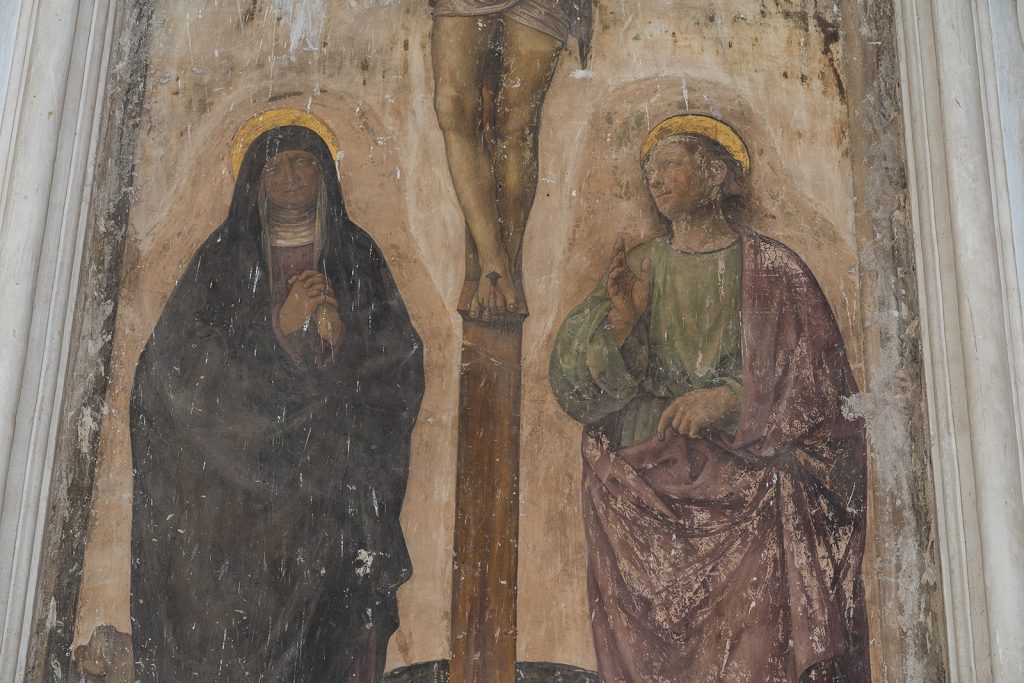
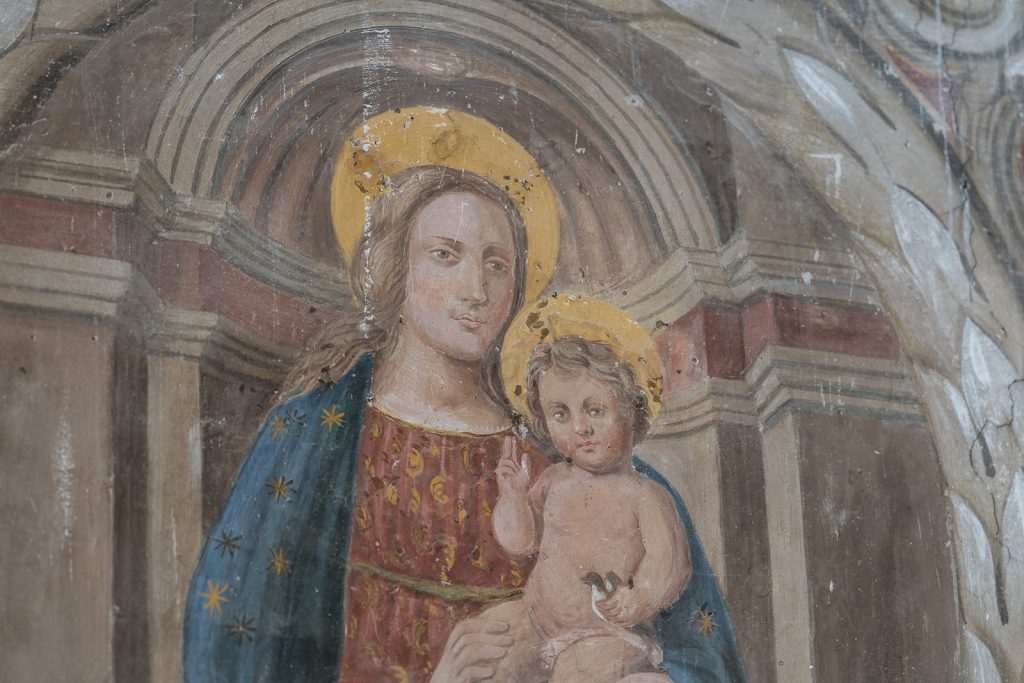
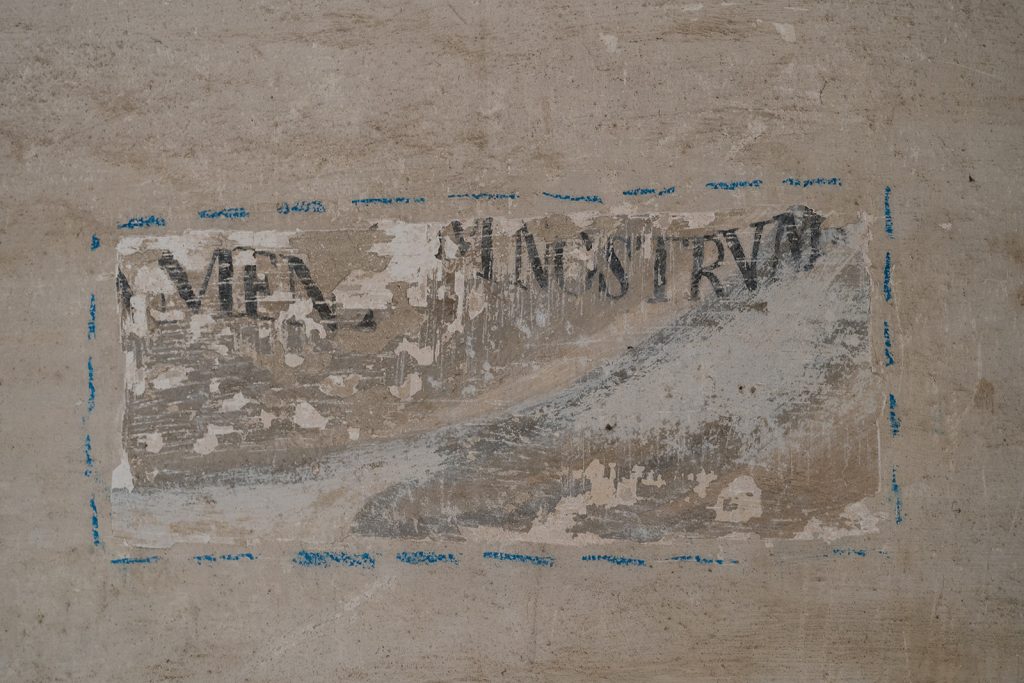
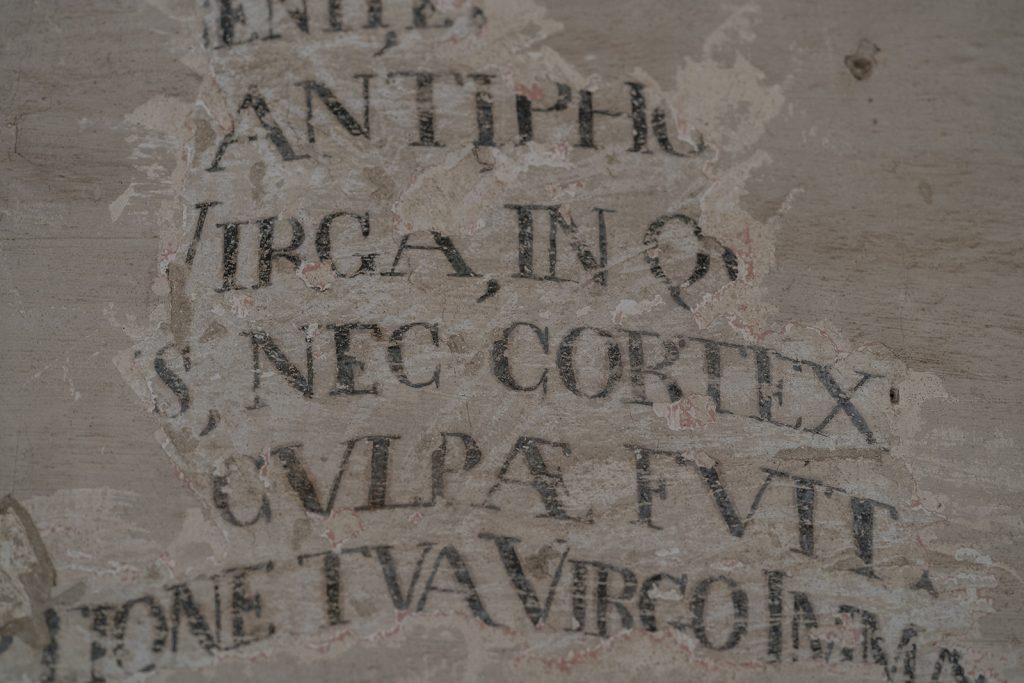
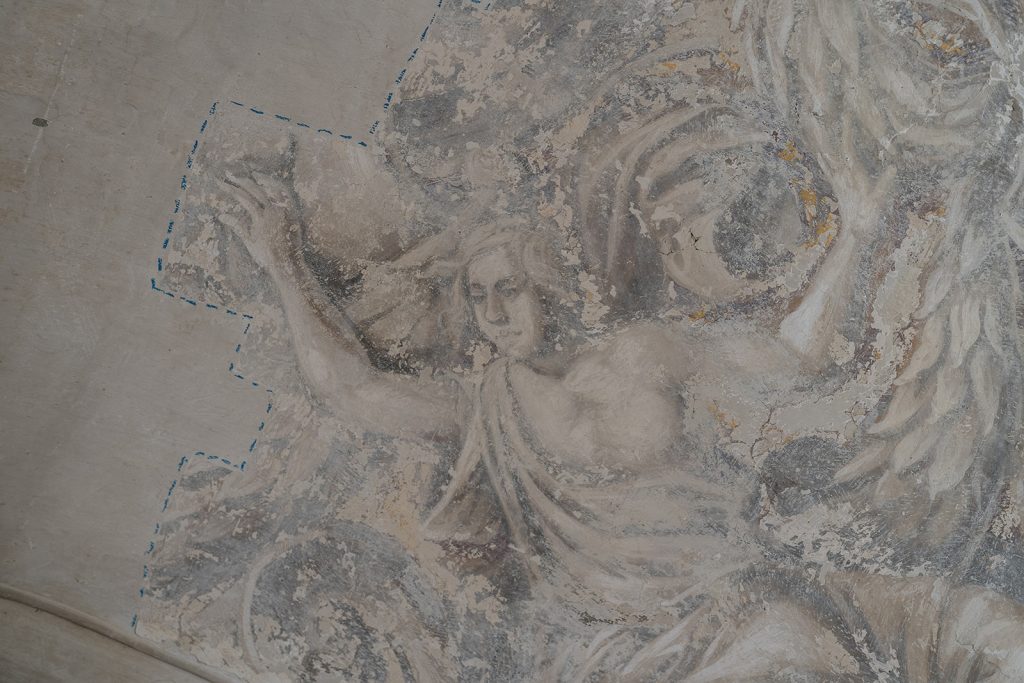
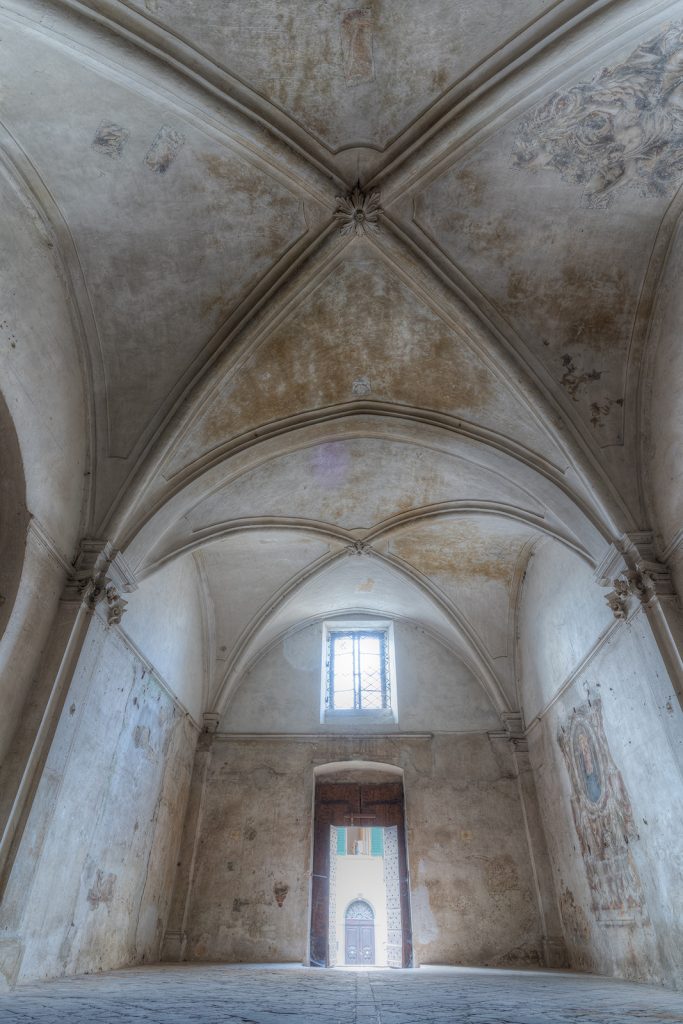
SAN SEBASTIAN CHURCH – THE HISTORY

The church was built in 1478 by the lay brotherhood of San Sebastiano, and inside there were numerous works by Bernardino Dini known as il Sordo, by Gian Battista Pacetti known as lo Sguazzino, by Virgilio Ducci and by Gian Ventura Borghesi.
Originally a Greek cross, today it has a single nave with only the right apsidal arm. The elegance of the capitals decorated with acanthus leaves and scrolls of the pilasters, together with the ribs of the vaults and half domes mark the architectural space. This is intimate and delicate, described by the duotone of the light blue dust of the walls and vaults and the white of the stuccoes.
Small portions of frescoes emerging here and there suggest that the walls were entirely frescoed. The main altar is the fulcrum of the Church, decorated with stuccoes depicting winged cherub heads and plant elements.
“[…] deeply convinced that the best guarantee of conservation of monuments and works of art comes from the affection and respect of the people that educators take every care to accustom childhood and youth to refrain from any act that can degrade the monuments and lead them to understand the meaning and to take an interest, more generally, in the protection of the testimonies of every civilization. “
Art. X, Athens Charter, 1931 Athens International Conference
